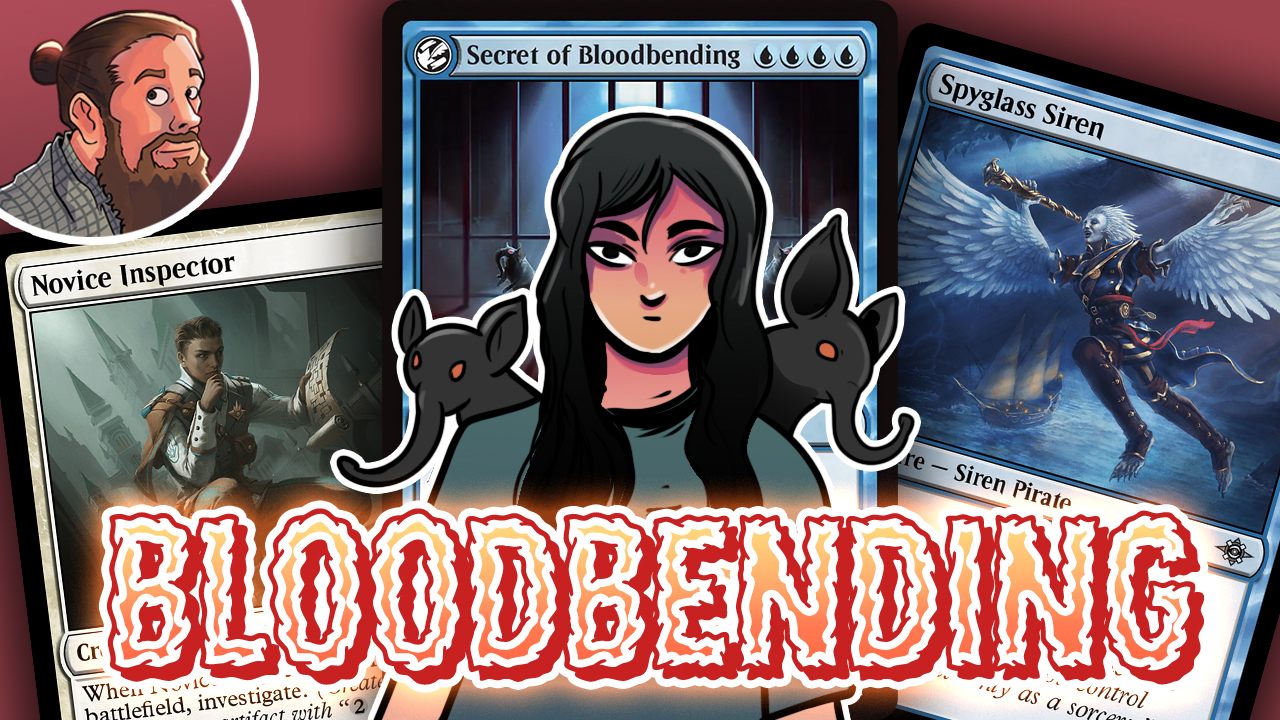What Is Standard's Pathway Forward?
Early this week, by surprise, the officially @wizards_magic Twitter account sent shockwaves through the Magic world with the following tweet: "We're closely monitoring developments in Standard. In order to avoid disrupting this weekend's tournaments, we intend to prove an update on the format early next week." While not explicitly stated, the most common reading of the tweet is that Standard bannings are already on the way, a theory that was seemingly confirmed in the Magic Online Weekly Announcements a few days later. Yet another round of Standard bannings are on the way.

The shocking part of the tweet isn't so much that we might be getting more Standard bannings. At this point, bannings in Standard are the norm rather than the exception. What is shocking is that Zendikar Rising has just been released. In fact, when Wizards sent its announcement-of-an-announcement tweet, the set wasn't even officially out in paper and had been legal on Magic Online and Magic Arena for less than a week. Whether we end up with more cards banned in Standard or not when the official "update on the format" is released in a few days, the swiftness of Wizards' response is unprecedented in the modern era of Magic.
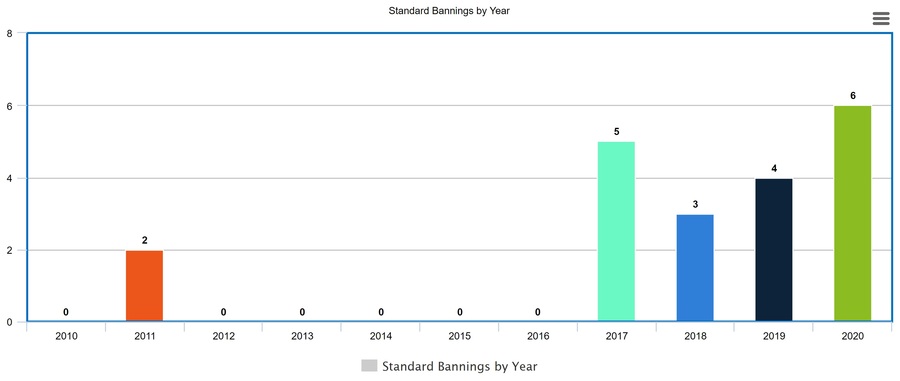
What could cause Wizards to take such quick action isn't exactly clear. While very early Standard results suggest that Lotus Cobra / Omnath, Locus of Creation decks in general and Uro, Titan of Nature's Wrath specifically are a dominant force in Zendikar Rising Standard, with Uro showing up in 65% of the decks at last week's MTGO Standard Challenge and Lotus Cobra / Omnath decks making up 50% of the Top 32, the Hooglandia Open had a more diverse meta—at least, to some extent. Plus, we're a handful of days and two small tournaments into Zendikar Rising Standard. By traditional logic, it's too early to even discuss bannings since the format should be given a chance to adjust. But if there's one thing we know about 2020, it's not a traditional kind of year.



As such, it seems unlikely that Wizards would take such strong and swift action based on just the publicly available tournament results. Announcing Standard bannings before a new rotating set is even out is a huge admission of failure from Wizards R&D and very likely something it would wish to avoid, if at all possible. It's hard to imagine that such a step would be taken based on two small tournaments, which means that the internal, non-public data on Zendikar Rising Standard from Magic Arena and Magic Online must be frightfully bad. From the outside, we can's see how many players are actually playing games on Arena, buying packs of the newest set, or mashing the frowny face after they lose to a Turn 4 Ugin, the Spirit Dragon off of Lotus Cobra and Omnath, Locus of Creation mana, but Wizards can. The only way that such swift action makes any sense is that the internal data that Wizards can access look even worse than the public data that we can all look at, which is scary because the public data (with the caveat that the sample size is tiny and we're in the first week of a brand-new Standard format) don't look all that great.
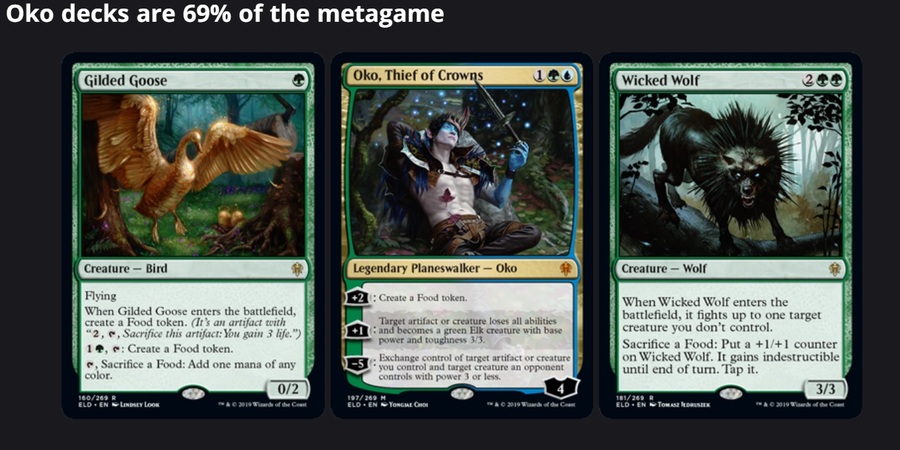
It may also be that history is at play here as well. Last rotation, a year ago, was disastrous for the game, with Field of the Dead being banned shortly after Throne of Eldraine was released, in a move that failed to fix the true problem (or at least one of them, as the following year showed Standard had a mountain of problems) in Oko, Thief of Crowns, which went on to break records by being 70% of a Mythic Championship a few weeks later before finally being banned. At the time, it felt like a mistake to wait so long to ban Oko, Thief of Crowns and to let a Mythic Championship be destroyed in the process. With a major tournament on its way the second weekend in October (the Grand Finals), Wizards may also be looking to be more aggressive to avoid a repeat, which is a good idea on its face, although, as the last 12 months (and in reality, the past four years) have clearly shown, banning something is far from a guaranteed fix for Standard, as the next most broken thing tends to rise to the top of the format and need to be banned a couple of months later.
While I would rather have Wizards take aggressive action in an attempt to improve the format than let what should be the most exciting time on the Standard calendar be ruined by overpowered cards, in an even more perfect world, Standard and the cards in it would be designed and developed in a way that made bannings on release weekend unnecessary.
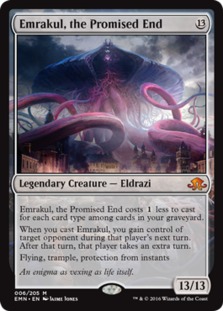

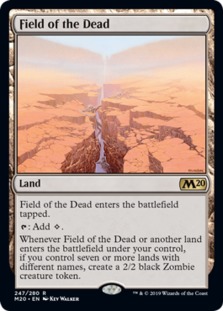
The biggest issue is that this pattern—of an overpowered deck or card getting banned only for something almost as broken to take its place and also need to be banned—has more or less been consistent over the past four years. From 2001 thought 2016, Standard had two major rounds of bannings: Affinity back in 2004 (which technically happened over a couple of B&R updates, although all focused on the same subset of cards) and Caw Blade in 2001. Since January 2017, when Emrakul, the Promised End, Smuggler's Copter, and Reflector Mage were banned, we've had five bannings in 2017, three in 2018, four in 2019, and six (and still counting) in 2020. Discounting the first few years of the game where formats and rules were a bit different than they are today, Standard has had significantly more bannings in the past four years than it has had during the entire history of Magic.
While I do believe that Wizards was probably too conservative with bannings in the past, especially considering the pressure that Magic Arena puts on Standard specifically to be fun, playable, and fresh all of the time, I also believe that the current pace of bannings is unsustainable, with an average of one every four-ish months for the past four years and closer to an average of one every two months over the past two years. Even for me, as someone who puts extremely high value on fresh formats and supports increasing the number of rotations each year to make this happen, the current banning mania is tiresome. The downside of having to talk about what should or shouldn't be banned in Standard every couple of months outweighs the upside of having "fresh" formats to explore, especially when it seems like none of the bannings actually fixes whatever underlying problem is causing the explosion in bannings.



In some ways, the cards that seem most problematic today in Zendikar Rising Standard—Lotus Cobra, Uro, Titan of Nature's Wrath, and Omnath, Locus of Rage—fit the same model as cards that have caused issues in past Standards. They are ramp cards that put one player far ahead in resources and do so in a way that has an extremely high ceiling since both Uro and Omnath draw a card when they enter the battlefield, so even if they are immediately answered, at best, they are two-for-one'ing themselves. This combination of explosive mana production, which comes in a way that cannot be dealt with effectively outside of maybe counterspells, calls back to cards like Fires of Invention and Wilderness Reclamation, where even if you answer these cards, you're already significantly behind as soon as you untap on your turn, and if you can't answer them right away, their value will quickly snowball the game out of reach.



On the other hand, Oko, Thief of Crowns didn't make mana. Neither did Cauldron Familiar, Teferi, Time Raveler, Veil of Summer or many of the other cards that have been banned over the past four years, which suggests that while hard-to-interact-with ramp might be part of the problem, it isn't the entire problem. The other half of the problem seems to be that the best, most pushed cards in most sets are simply too good and too pushed.
The big question is why this pattern keeps repeating itself. Wizards did a tremendous job balancing the game and keeping power creep in check for almost 25 years. It's hard to imagine that Wizards simply forgot how to do it over the last few years. Instead, it seems that the choices and risks Wizards is taking have to be intentional. Some have questioned whether Arena is playing a role, and while it probably has an impact, thanks to its ability to let everyone play endless games, it has caused a huge increase in Magic streams and content, so most players know the best decks in Standard almost immediately, with very little work. And because the economy pushes free-to-play (and mostly free-to-play) players into building one top-tier deck and grinding it for months to try to earn enough rewards to build another deck (and repeat the process), considering that the current trend started back in 2017, before Arena was a meaningful part of the multiverse, it's hard to put much blame on the new client.
Others have chosen a more conspiratorial path, believing that Wizards is intentionally pushing cards to previously unheard of power levels to sell each new Magic set, with the knowledge that it'll have to ban them after the next set comes out and Wizards is more or less done profiting from the cards. While there is no doubt that Wizards pushes cards to sell sets, it's hard for me to believe that Wizards would intentionally create this cycle of bannings to chase short-term profits. While there is undoubtedly pressure from Hasbro to bring in more and more money (Hasbro CEO Brian Goldner love to say that he believes Wizards can double its business in the next five years), the idea that Wizards would intentionally push and then ban cards just to sell a new set is so shortsighted that even in an era where short-term profits seem to be the focus it's pretty hard to believe especially when there are other options that can guarantee a set sells (like reprinting fetch lands, for example).


My personal take is that Hasbro has put immense pressure on Wizards to make more products and more money. While Wizards isn't intentionally trying to make cards that will end up getting banned, this pressure is pushing Wizards to take risks that it wouldn't have in the past (see: Mark Rosewater's take on a companion-like mechanic from several years ago as compared to the companions being printed in Ikoria). Add in that Magic has been going for 27 years now, which means many of the simplest and safest designs and mechanics have already been used and reused, so it takes shockingly powerful cards like Uro, Titan of Nature's Wrath to make players' jaws drop these days, when in the past something like Siege Rhino could get the job done, as well as the FIRE design philosophy, and in some ways, it's unsurprising that we continually see the top 1% of cards in each set pushed too far, to the point where many end up being problematic and some are even bannable.
The part that scares me is that I don't see an easy fix to this problem. Last year, when Wizards was pumping the views of Arena tournaments by embedding them off-screen on various non-Magic webpages, one of my big concerns was what would happen once the embedding ended. While using the technique to get 150,000 views for a Mythic Invitational likely provides a short-term burst of publicity, either you have to keep up the practice forever or eventually face a huge decline in views when you stop the embeds. The crash finally happened this summer, with the last Mythic Invitational struggling to get 25,000 viewers after getting 150,000 just a year ago, while other high-level Arena tournaments have been stuck in the 10,000\-view range.
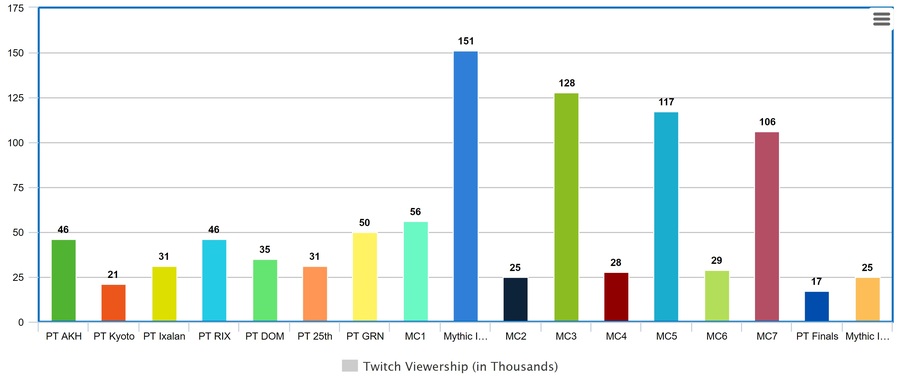
In some ways, Standard is in a similar place. After a few years of pushing cards to such extreme heights, Wizards might be locked into a place where it has to keep the trend going, keep topping itself, and keep printing the next jaw-dropping mechanic or card in each set, with Wilderness Reclamation turning into Field of the Dead into Oko, Thief of Crowns into Uro, Titan of Nature's Wrath into companions and then DFMC lands. If Wizards doesn't, the only other option is a string of underpowered sets to reset the power level of Standard, and underpowered sets aren't usually great sellers (players also like powerful cards, just not bannably powerful cards). In an era when Hasbro highly values profits from this quarter (and over the next few years), this might not be an option like it was in the past. The other option is to keep pushing, which should keep the profits flowing over the short term but, over the mid- to long term, risks burning players out with too many bannings and driving some players away from the game altogether. Basically, from the position we are at now, none of the options is great, with some likely being unacceptable to Hasbro and others leaving the game at risk due to increasing power creep and bannings.
In many ways, it feels like Standard has been hit by very much self-inflicted perfect storm: pressure from Hasbro, changes in design philosophy, and the increase in Magic content and play brought about by the launch of Magic Arena. I'd like to think that whatever changes happen next week would suddenly put Standard back to "normal," but based on the past few years, I can't help but feel that, for better or mostly worse, this is the new normal.
Considering the unclear path forward, at some point, we might have to come to grips with the fact that Standard is a format where bannings are going to happen on a regular basis and try to make the best of a less-than-ideal situation by taking full advantage of the windows where Standard in fresh and fun (primarily after new sets are released and after a banning happens) and build our Historic, Pioneer, Modern, and Legacy collections for when Standard is in lame-duck periods waiting for bannings or clearly broken, with a deck or card taking up 50% or more of the meta. Thankfully, Magic is much more than Standard and the best part of the game is that we can play it in whatever manner we enjoy. Rather than focusing on the continual problems of Standard, build a new Commander or Brawl deck, tune up an old Modern list, or try some new Zendikar Rising spice in Historic. The bottom line is that while Wizards makes the game, we get to make the choice of how we play it.
Conclusion
Anyway, that's all for today. What are your thoughts on the future of Standard? What may (or may not) be banned next week? What non-Standard formats have you really been enjoying lately? Have you built a new Commander deck? Historic deck? Modern? Pioneer? Let's talk about it in the comments! As always, leave your thoughts, ideas, opinions, and suggestions, and you can reach me on Twitter @SaffronOlive or at SaffronOlive@MTGGoldfish.com.
Of yeah, and if you were wondering about whether or not bannings actually fix Standard we delve into the question on the Youtube channel with a look at the last four years of Standard banning!



